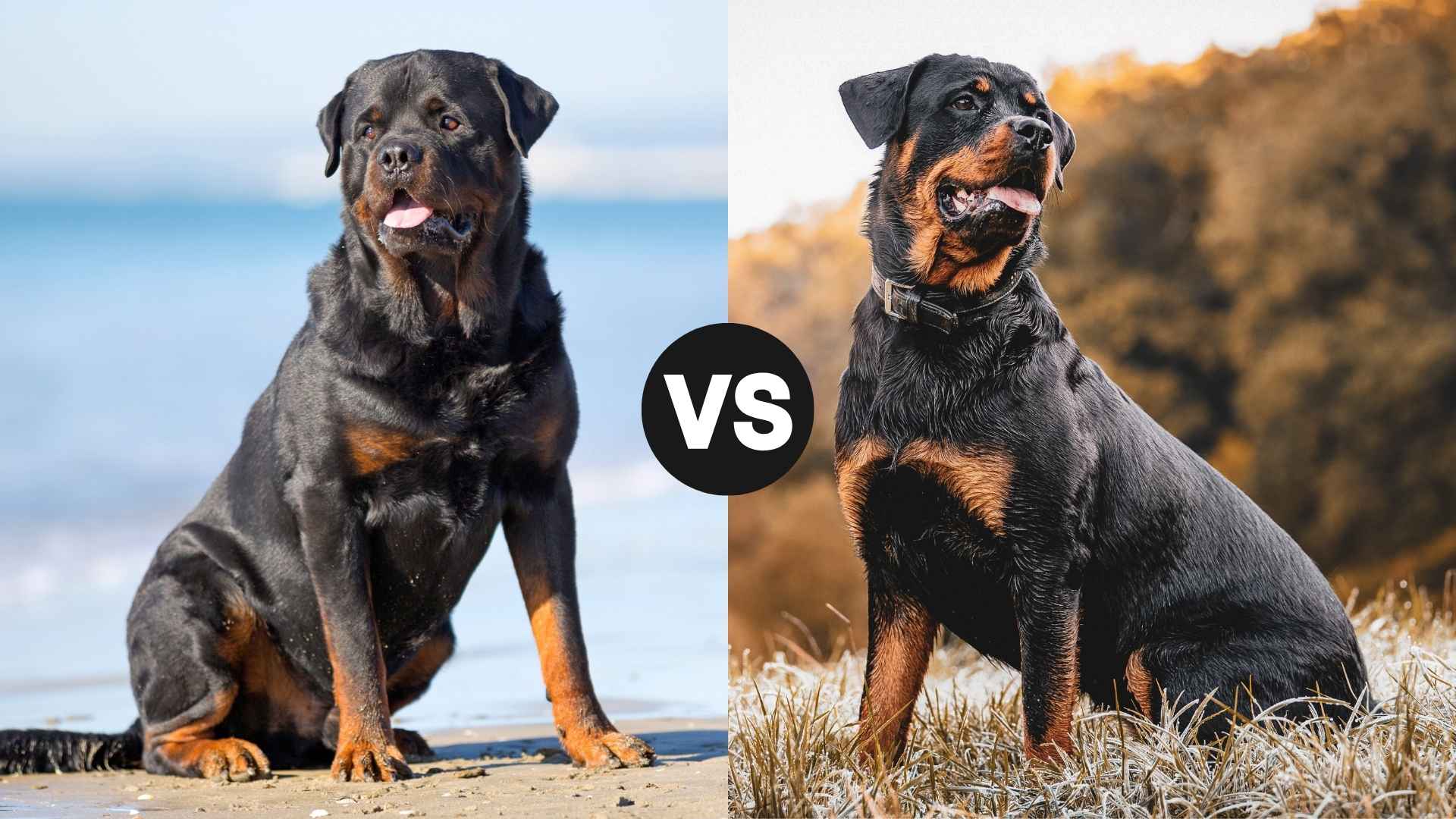Rottweilers are among the most popular dog breeds globally, admired for their protective instincts, strength, and intelligence. Historically, these working dogs played vital roles as cattle herders, guardians, and even cart-pullers. Over the centuries, they evolved into loyal family dogs, security dogs, and guide dogs, showcasing their versatility.
Within the Rottweiler breed, there are two main classifications:
German Rottweiler – bred in Germany, following strict breed standards set by the Allgemeiner Deutscher Rottweiler Klub (ADRK)
American Rottweiler – bred in the United States under American Kennel Club (AKC) standards, which are less strict
Additionally, there is a Roman Rottweiler, which is a type of Rottweiler rather than a separate breed. Known for its larger, bulkier build, it was historically used by Roman soldiers for herding and guarding livestock, earning it the nickname Gladiator Rottweiler or King Rottweiler.
Before choosing between German and American Rottweilers, it’s essential to understand their notable differences in appearance, temperament, training needs, and health considerations.
German vs. American Rottweilers
When comparing American and German Rottweilers, it’s important to understand that they both share the same ancestral roots but differ primarily in where they’re bred, the breed standards they must follow, and how those standards impact their appearance, temperament, and health.
German Rottweilers
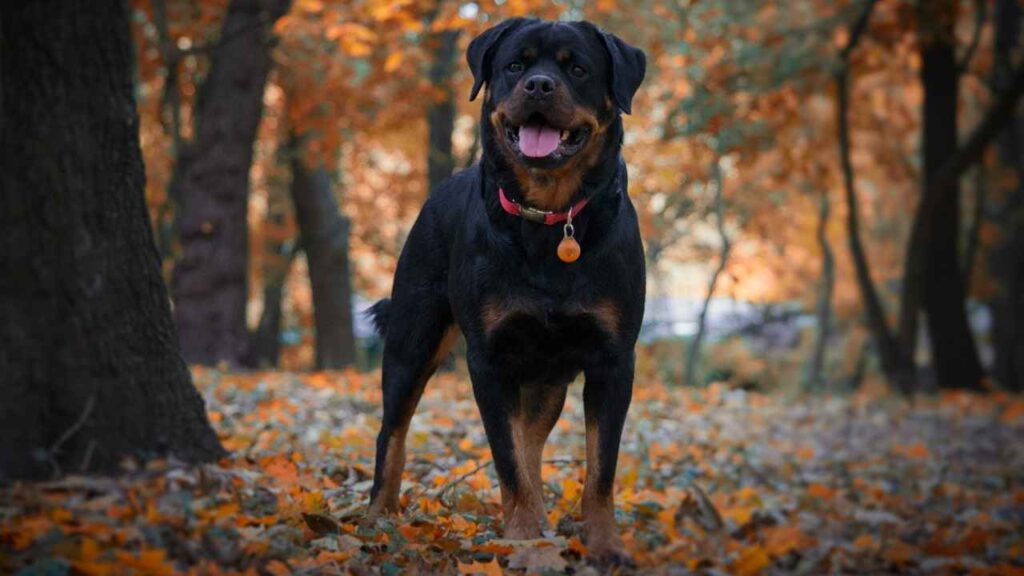
Must be born in Germany to be recognized as German Rottweilers.
Governed by the Allgemeiner Deutscher Rottweiler Klub (ADRK), which has strict breed standards.
Dogs must pass breed suitability tests to ensure they meet health, temperament, and physical requirements before breeding.
Tail docking is not allowed, and only acceptable coat colors like black and mahogany, tan, or rust are permitted.
American Rottweilers
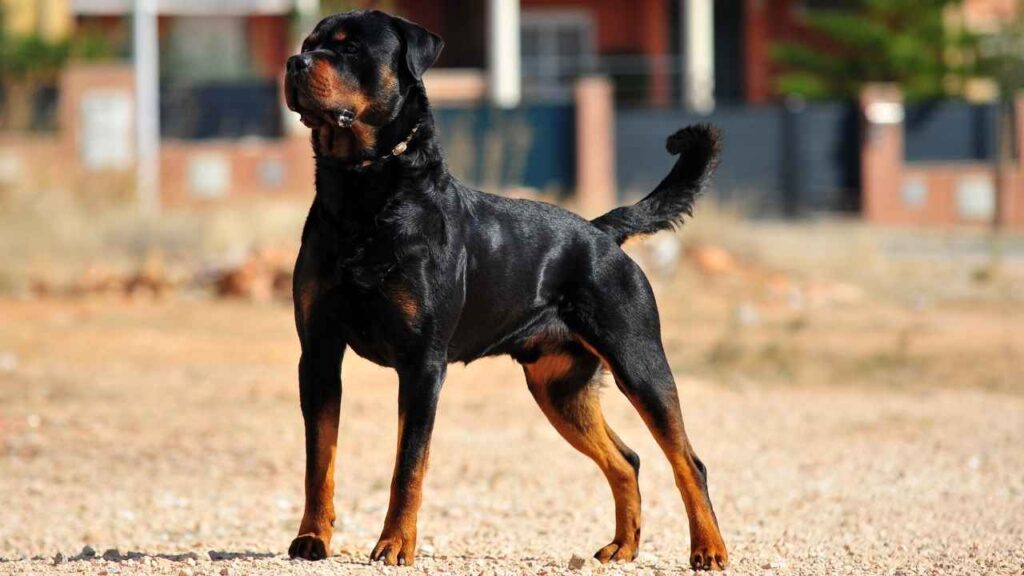
Bred in the United States and registered with the American Kennel Club (AKC).
AKC standards are more lenient, allowing more variation in size, shape, and coat colors.
Tail docking is common and accepted as a breed standard.
No strict breeding tests, which can sometimes lead to faulty Rottweilers being bred.
In short: All German Rottweilers are bred in Germany under strict ADRK regulations, while American Rottweilers are bred in the US with more relaxed AKC standards.
Visual Differences: Appearance & Build
While German and American Rottweilers share the same overall look as strong, muscular dogs, there are notable physical characteristics that are different in their build, coat colors, and specific features due to varying breed standards in Germany and America.
American Rottweiler Appearance
The American Rottweiler dog is recognized by its:

Docked Tail
A characteristic feature, as tail docking, is a common practice in the United States.
Tail docking involves cutting the tail when the dog is a puppy.
Head & Facial Structure
Medium-length head that is broad between the ears.
Triangular ears with a slight forward tilt.
Almond-shaped eyes, typically dark brown, give a confident and alert look.
A black, round nose and a moderately long, slightly arched neck.
Body Structure
Slightly smaller and less robust than the German Rottie.
The chest is deep, broad, and roomy, with oval, well-sprung ribs giving a sleek yet muscular form.
Coat Colors
The AKC is not strict about coat color variations.
You may see black and mahogany, black and tan, black and rust, and even rarer red or blue coat colors.
German Rottweiler Appearance
The German Rotties, bred under strict ADRK standards, have:
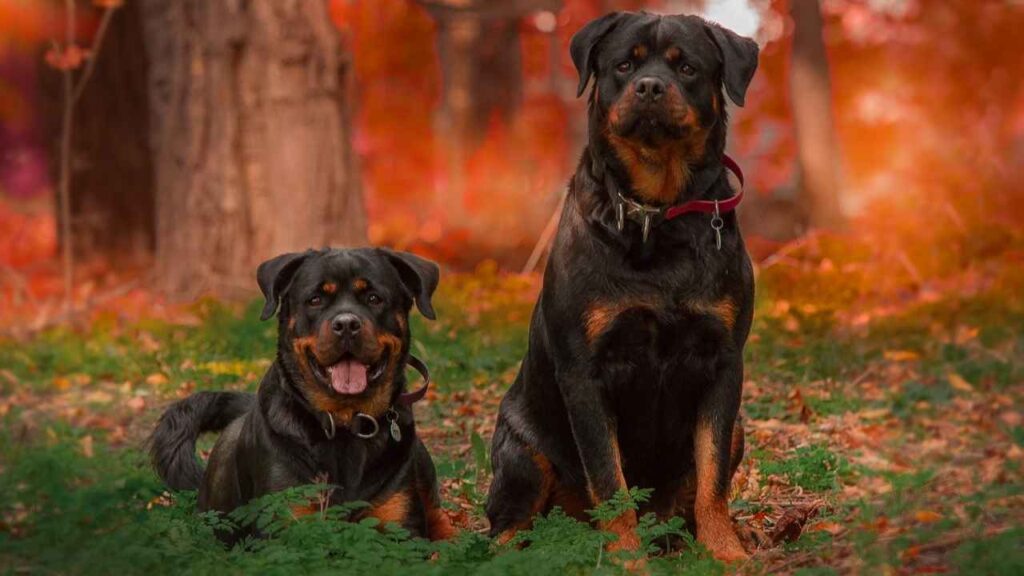
Undocked Tail
Tail docking is prohibited in Germany.
A natural, full-length tail is a must for ADRK registration.
Head & Facial Structure
Almond-shaped eyes and triangular ears, similar to the American Rottweiler.
A well-muscled, strong neck for a powerful working-dog stance.
A broader nose and a wider body compared to the American version.
Body Structure
Stockier and more robust, with a heavier, sturdier build.
More muscular legs and a slightly broader body shape, showing strength and endurance.
Coat Colors
Strictly limited acceptable coat colors as per ADRK standards are black and mahogany, black and rust, and black and tan
No variations like red or blue are allowed under ADRK guidelines.
Personality & Temperament Traits
German Rottweiler
German Rottweilers tend to be calm, steady, and incredibly dependable, making them the gold standard of the breed. Carefully bred under ADRK guidelines, they are designed to be the perfect companion dog, combining a sharp mind with a gentle and playful nature.
As loyal human companions, they fiercely protect their families from any perceived threat while remaining easygoing and affectionate with children. When raised alongside other pets from a young age, a Rottweiler puppy grows into a well-socialized adult that forms deep bonds with other animals.
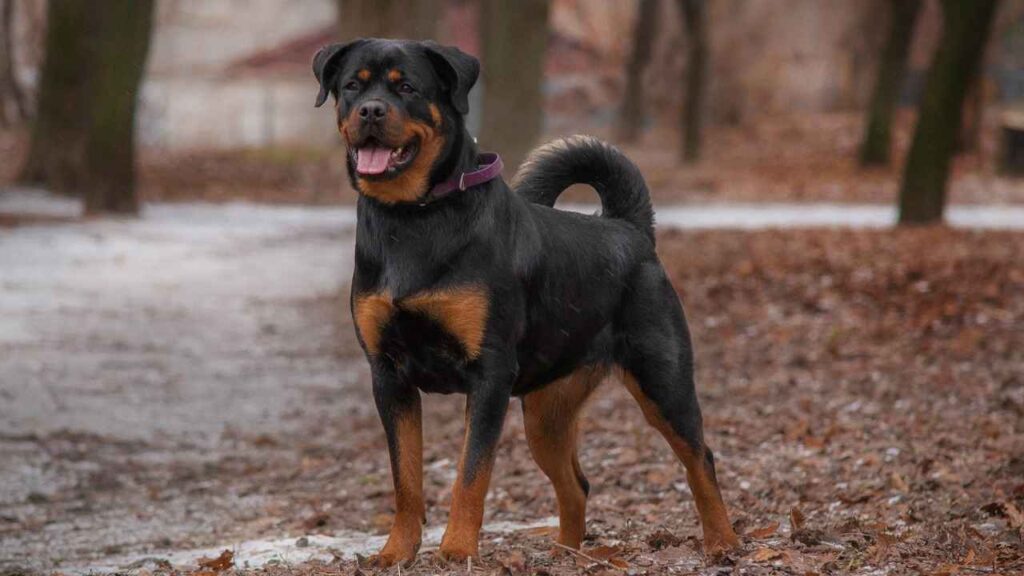
Their high intelligence and eagerness to learn make them responsive to training, but like all large dogs, early training is essential to ensure they mature into well-behaved and balanced dogs.
American Rottweilers
American Rotties share the same loyalty and intelligence but are known to be slightly more aloof with strangers, often displaying a wait-and-see attitude before deciding if someone is a threat.
While they make equally wonderful dogs and can develop close relationships with children, supervision is recommended during interactions, especially with small kids.
When socialized properly, they get along well with other house pets, though they may sometimes show aggression toward dogs of the same sex.

American Rottweilers remain highly trainable and eager to please but can be a bit more stubborn compared to their German counterparts, requiring consistent guidance and patient handling to unlock their full potential as loyal human companions.
Exercise Needs & Energy Levels
Rottweilers are not just powerful working dogs; they are also highly energetic and thrive on having a purpose. Whether you have a stocky German Rottweiler or a leaner American Rottie, both require regular activity to stay healthy and content.
Britannica states that these dogs were originally bred for herding, guarding, and pulling carts, which means their bodies and minds are naturally wired for action. Without enough exercise, even the most wonderful dogs can become restless, bored, or even destructive.
Providing the right balance of physical activity and mental stimulation is essential for keeping your Rottweiler well-behaved, happy, and in peak condition.
Minimum Exercise:
At least 2+ hours per day of activity is needed for a healthy adult Rottweiler.
Types of Activities:
Brisk walks (morning and evening)
Obedience training sessions to stimulate their sharp mind
Playtime with other pets (if socialized early as a Rottweiler puppy)
Fetch or agility drills to build strength and coordination
What Happens Without Enough Exercise?
If either a German Rottie or an American Rottie doesn’t get enough exercise:
They may develop excess energy, leading to destructive chewing or digging.
Lack of stimulation can result in stubbornness or restlessness.
Over time, insufficient activity can also cause weight gain and health issues common in large breeds.
Training Style & Intelligence
Rottweilers are highly intelligent dogs, ranked among the top ten smartest dog breeds. Their natural eagerness to learn, combined with their strong work ethic, makes them highly trainable when handled correctly.
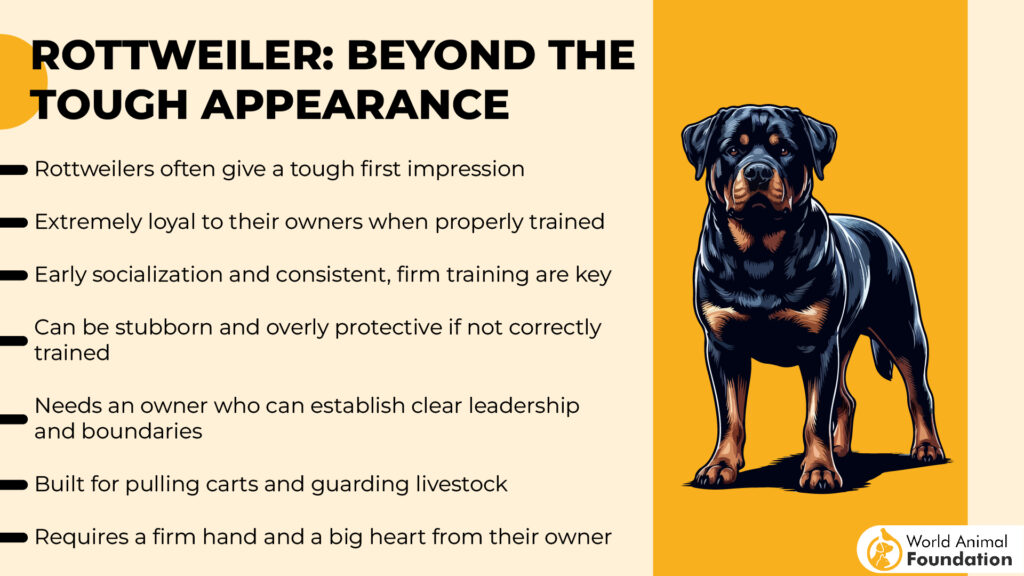
However, because of their strength and confidence, training must begin early—ideally from the time they are a puppy. Consistency, patience, and positive reinforcement are key to shaping them into well-mannered family companions.
German Rottweilers
German cousins of the breed are known for their calm and steady temperament, which often makes them slightly easier to train. Bred under strict ADRK standards, these dogs are carefully selected for balanced temperaments and mental stability.
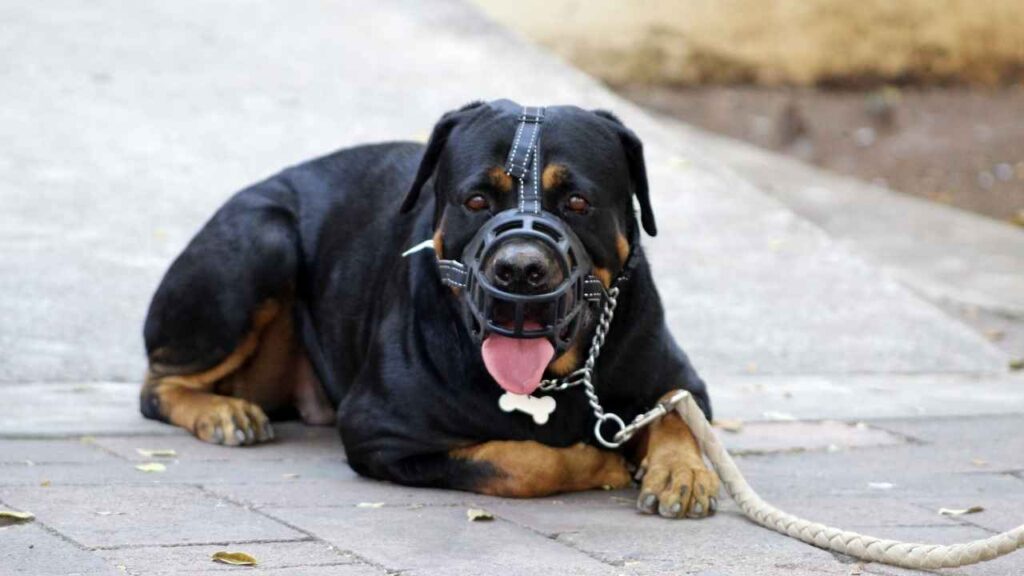
They respond well to structured obedience training, socialization with other dogs, and tasks that engage both their minds and bodies. When sourced from a reputable breeder, German Rottweilers come with predictable temperaments that make them excellent working dogs, security dogs, or reliable family protectors.
American Rottweilers
American counterparts, while equally loyal and trainable, can sometimes be a bit more stubborn. Their breeding under less strict standards means there can be slight variations in temperament, which may require extra consistency during training.
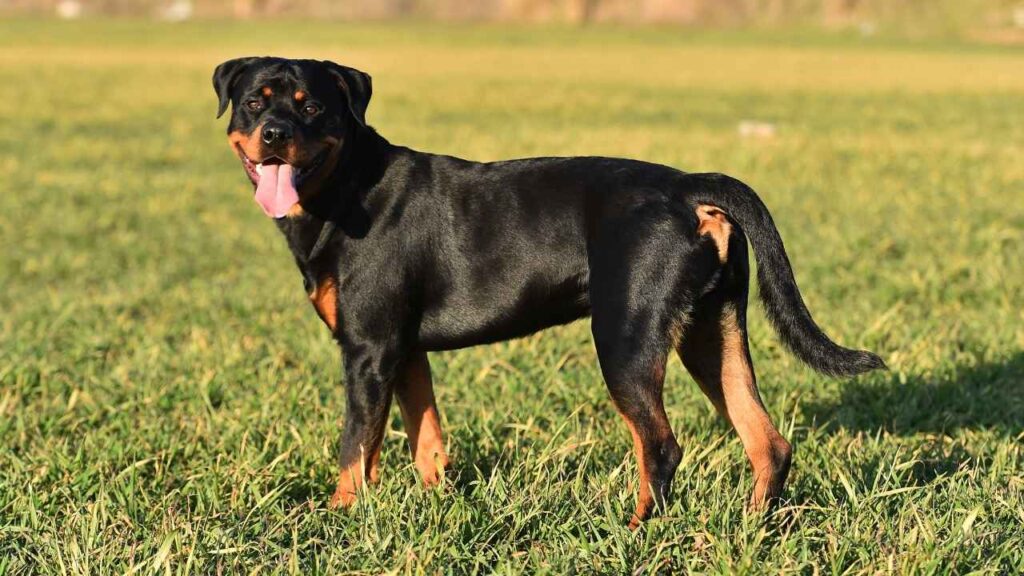
They still excel in learning commands and forming deep bonds with their owners, but may need closer supervision when interacting with other dogs, especially of the same sex.
Health, Lifespan & Veterinary Care
Like all large breeds, Rottweilers are prone to certain health problems that owners must be aware of. Both German and American lines can experience issues common to their size and build, but the strict breeding standards in Germany help reduce the risk of genetic diseases.
German Rottweilers are carefully screened before breeding, which greatly lowers the chances of inherited conditions. In contrast, American Rottweilers, bred under more relaxed standards, may have a slightly higher likelihood of developing these concerns.
The most common issues include hip dysplasia and elbow dysplasia, which can affect mobility and cause discomfort as the dog ages. Regular checkups, a balanced diet, and proper exercise can help prevent these conditions or catch them early.
WebMD mentions that the average lifespan of a healthy Rottweiler is typically 9 to 10 years, though those with fewer hereditary health problems—often from responsible breeding—can live longer. Routine veterinary care, early detection of illnesses, and ensuring your Rottie comes from a reputable breeder are the best ways to maintain their health and give them a long, comfortable life.
Grooming Needs & Maintenance
Rottweilers are relatively low-maintenance when it comes to grooming, thanks to their short, dense double coat. Both German and American Rottweilers shed moderately throughout the year, with heavier shedding occurring during seasonal changes.
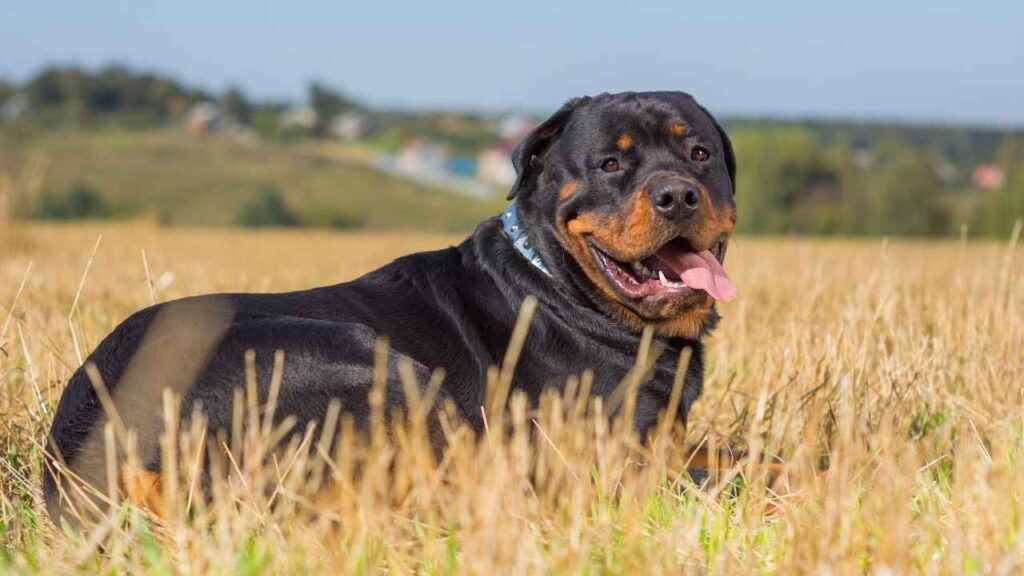
Regular brushing—about once or twice a week—is enough to remove loose hair and keep their coat looking healthy and shiny. During peak shedding seasons, more frequent brushing helps manage excess fur and reduces the amount of hair around the home.
Bathing should be done only when necessary, as over-bathing can strip the coat of its natural oils, leading to dry skin. Basic care like cleaning their ears, trimming their nails, and brushing their teeth should be part of a routine schedule to maintain overall hygiene.

Since these are large, strong dogs, it’s important to start grooming habits early, ideally when they are a puppy, so they learn to stay calm during maintenance. With consistent care, both German and American Rottweilers remain clean, healthy, and comfortable with minimal effort.
Conclusion – German Rottweiler vs American
When comparing, the differences between the German and American lines mainly come from breeding standards and regulations. The German ones are bred under the strict ADRK guidelines, resulting in sturdier dogs with predictable temperaments and fewer genetic issues, making them ideal for working roles and even competitive dog shows. On the other hand, American Rottweilers, produced by more relaxed American breeders, may have slight variations in build, temperament, and coat colors but still remain loyal, protective, and loving companions.
Whether you choose German or American, both are exceptional dogs that can thrive as family protectors or working partners when trained and socialized early. The key is to understand their unique traits and ensure you get your Rottweiler from a responsible source. In the end, both types are powerful, intelligent, and deeply devoted, making them lifelong friends and guardians.


